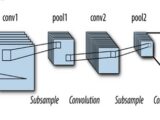
Data Augmentation, Adding Noise to Input and Output
August 29, 2023In the realm of artificial intelligence and machine learning, the quality and quantity of training data significantly impact the performance of models. Data augmentation, a technique employed to enhance training datasets, has gained immense prominence due to its ability to mitigate overfitting and improve generalization. One of the powerful methods within data augmentation is adding noise to both input and output data. This technique offers a unique way to bolster the robustness and adaptability of machine learning models across various domains.
Understanding Data Augmentation and Noise Injection:
Data augmentation involves creating new training examples by applying various transformations to the original data. These transformations maintain the underlying patterns and characteristics of the data while introducing slight variations. One notable approach within data augmentation is the incorporation of noise into both input and output data.
Adding Noise to Input Data:
Injecting noise into input data involves introducing controlled disturbances to the original data. This can include techniques such as adding random pixel-level noise to images, applying perturbations to audio waveforms, or inserting jitter into time series data. By doing so, the model becomes less reliant on exact replicas of training samples and learns to adapt to variations, resulting in improved generalization.
Adding Noise to Output Data:
While adding noise to input data is common, incorporating noise into output data has its own merits. In tasks like image segmentation or language generation, introducing minor variations in the output labels or sentences can help models learn to produce more accurate and diverse results. This can be achieved by adding subtle changes to the annotations or target labels, encouraging the model to understand and tolerate variations in the desired outputs.
Exploring Data Augmentation Techniques
Let’s shed light on some commonly used techniques that play a important role in enhancing model performance. These techniques serve to augment datasets and provide our models with a diverse and enriched training experience.
1]Image Transformations:
Rotation: This technique involves adjusting the orientation of an image by a specified angle, effectively allowing our models to learn from various perspectives.
Flipping: By creating a mirror image through horizontal or vertical reversal, flipping augments the dataset with flipped versions of the same images, expanding the training horizon.
Cropping: Trimming an image to focus on a specific region of interest introduces variability, enabling our models to recognize objects from different viewpoints.
2]Audio Data Transformations:
Variations in Pitch: Altering the frequency of audio clips can lead to higher or lower tones, enabling models to learn variations in sound patterns.
Variations in Speed: Changing the playback speed of audio data introduces a dynamic element, enhancing the model’s adaptability to different speech rates.
3]Text Data:
Paraphrasing: Through the technique of paraphrasing, sentences are rephrased while retaining their core meaning. This helps in training models to comprehend and generate diverse textual content.
Synonym Substitution: The substitution of words with their synonyms adds richness to text data, enabling models to capture different semantic nuances.
When these techniques are thoughtfully combined with noise injection, the model’s ability to generalize and excel across various scenarios is significantly amplified. By incorporating these methods into our data augmentation strategy, we equip our models to better navigate real-world challenges and produce accurate results in a multitude of domains.
Benefits of Data Augmentation with Noise Injection:
- Improved Robustness: Models trained with augmented data are better equipped to handle real-world scenarios, where data can be noisy, imperfect, or ambiguous.
- Reduced Overfitting: Introducing controlled noise prevents models from memorizing the training data and helps them learn the underlying patterns, leading to better generalization on unseen data.
- Enhanced Diversity: Noise injection fosters diversity in the training dataset, enabling the model to learn a broader range of patterns and nuances present in the data.
- Better Performance on Limited Data: Data augmentation with noise is especially valuable when dealing with limited training data, as it effectively increases the effective size of the dataset.
- Adaptability: Models trained with augmented data are more adaptable to changes in input conditions, making them suitable for scenarios where the environment or data characteristics may vary.
Conclusion:
In the dynamic landscape of machine learning, the value of high-quality, diverse training data cannot be understated. Data augmentation, with its ability to simulate variations and noise, emerges as a powerful technique to enhance model performance and generalization. By injecting noise into both input and output data, models are better equipped to handle the complexities of real-world data and to produce accurate results in various domains. As research and technological advancements continue, the role of data augmentation with noise injection will only grow in importance, driving the development of more robust and adaptable machine learning models.


